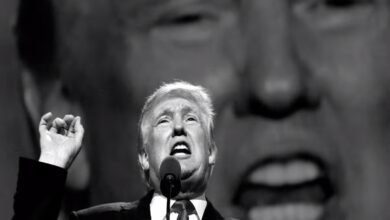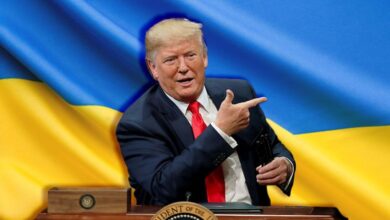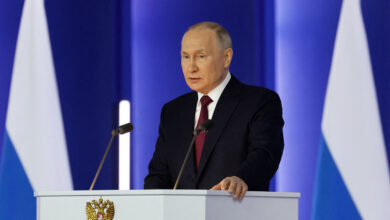Russia
-
Trends

Macron Declares Freedom Under Siege As Trump Tightens The NATO Noose. As France Charts Its Own Path Has NATO Unity Truly Cracked Under Trump’s Second Term?
Standing before the French armed forces on the eve of Bastille Day, President Emmanuel Macron delivered one of his most…
Read More » -
Trends

SCO Slams Israel, But India Stays Silent – An Ally To Israel, A Partner To Iran, A Spectator To War; Is India Playing Both Sides In The Israel-Iran Firestorm? And Where Does It Leave Russia?
As Israel launched a wave of strikes on Iran’s military and nuclear sites last Friday, world leaders scrambled to urge…
Read More » -
Trends

Middle East Erupts Again! After Gaza, Israel Strikes Iran. Trump Said No, Netanyahu Did It Anyway. What Could This Lead To? The Geopolitical Dominoes Set in Motion
In a dramatic and audacious escalation, Israel launched a widescale military offensive against Iran early Friday, targeting what it called…
Read More » -
Trends

Bombs, Bluster, And A Billion Lies. As Russia Rains Terror on Ukraine, Trump Faces His Kremlin Litmus Test
Ukraine is bleeding while the west waivers, even as Russia has unleashed its deadliest aerial blitz in months, killing at…
Read More » -
Trends

Abandoned By America, Europe Faces Dizzying Days After Trump’s ‘You’re On Your Own’ Doctrine. Can The EU Save Itself?
Europe is a continent awakened! When Donald Trump swept back into the White House for his second term, there was…
Read More » -
Trends

Is Trump’s “Cash Squeeze” Strategy The Secret Weapon To End The War?
US President Donald Trump has issued a strong statement about the Russia-Ukraine war. In a recent social media post, he…
Read More » -
Trends

Trump’s Controversial NATO Stand: Ukraine’s Membership Hopes In Ruins?
Former US President Donald Trump stunned policy circles when he said that Ukraine’s hopes of joining the North Atlantic Treaty…
Read More » -
Trends

Is Putin Warning The World About A Potential Global War ?
Russian President Vladimir Putin warned that the conflict in Ukraine is now spilling into “global” after accusing the United States…
Read More » -
Trends

Putin Announces New Policy On Russian Use Of Its Vast Nuclear Arsenal, A Dangerous Direction?
Russia’s President Vladimir Putin has made major revisions to the country’s nuclear doctrine, lowering the bar for the deployment of…
Read More » -
Trends

Zelenskyy’s High-Stakes U.S. Visit, Readying A Blueprint For Victory Even As Tensions Escalate
Ukrainian President Volodymyr Zelenskyy is undertaking a critical visit to the United States, where he will present Kyiv’s strategy for…
Read More »
